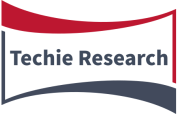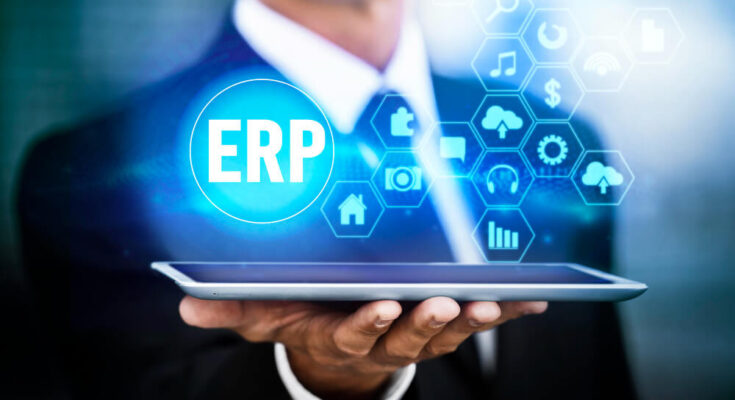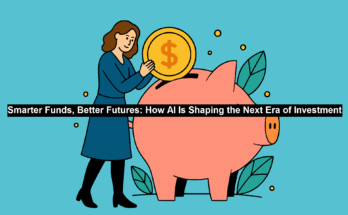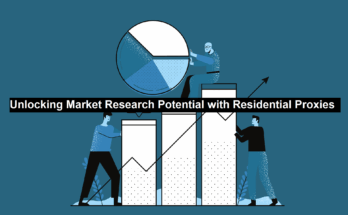Enterprise resource planning system is a business management software helping the day-to-day activities of businesses of all sizes. ERP system is a hot topic in the industry, especially after the pandemic covid 19.
We all live in a fast-paced digitized world. Businesses have become more competitive. Companies must adapt to the latest technologies to stay at the top of the game. ERP software is like the brains of the entire business. Deploying it in your company has a lot of benefits. So now it is necessary to implement an ERP system in your company.
ERP system existed way back in the 1960s, but Gartner gave the term ERP in the 1990s. ERP system has undergone a lot of changes over many years. A modern ERP software is more advanced and ready to embed technologies like AI (artificial intelligence), predictive analysis and many more. Choosing between a Cloud ERP with built-in payroll software or a dedicated SaaS payroll software relies on balancing customization freedom with rapid updates and lower overhead. All these additional technologies help businesses achieve greater efficiency, improve productivity and increase profits.
For better business efficiency, it is essential to have control of your business operations. That is possible after you deploy the right ERP system suitable for your company.
ERP system helps to integrate all business departments into a centralized system where all the users can access data. With business intelligence, business reports can be generated for the executives to gather insights to make better decisions. Now let’s learn more about Cloud ERP systems and SaaS ERP systems.
Types of ERP systems
There are four types of ERP systems:
- On-premise ERP system
- SaaS ERP system
- Cloud ERP system
- Hybrid ERP system
Learn more about the Cloud ERP system and SaaS ERP system below.
Cloud ERP system
Cloud ERP system is similar to SaaS ERP system but with only slight differences. How is it similar? A service provider operates a Cloud ERP system. And this ERP system is hosted in the cloud. It is subscription-based.
ERP system in the cloud gives you customisable options of features which you can choose to match your business requirements. Customisable features for your business increase efficiency, productivity and profits.
Note that if you choose a Cloud ERP system, your service provider has to fix all bugs, do the maintenance and keep your system updated. But for an on-premise ERP system, your company’s IT experts can do all the functions.
A Cloud ERP system is more economical than an on-premise ERP system. Your business can efficiently function with the latest up-to-date software. But for each software update, payment is necessary.
Advantages of Cloud ERP system
Cloud ERP systems have a lot of benefits, and most of the part is managed by the service provider:
- The cost of availing of the technology is lesser as there is no need to purchase hardware.
- Up-to-date software – the service provider updates the software each time the payment is made.
- Implementing duration is easy and faster.
- Data is stored securely, and it is accessible only to authorised executives.
- Highly resilient.
- Data can be transferred with ease.
Disadvantages of Cloud ERP system
Data migration can sometimes be challenging and complex if you shift from an on-premise ERP system. Data security is, again, a problematic issue. And data control is a question. As the cloud service provider is the one managing these two aspects.
The customisable option and features are fewer compared to the on-premise ERP system.
SaaS ERP system
SaaS ERP system is more similar to the Cloud ERP system. It can be expanded as software as a service. It is also hosted in the cloud. The significant point, it runs on multi-tenant SaaS architecture.
Businesses now prefer using the SaaS service as the technology part, like keeping the software updated, maintenance checks and bug fixing is done by the service providers. Say bye to all the complexities of hiring IT personnel to manage all these tasks. Cloud ERP’s superior data integration allows robotics technology to seamlessly interact with ERP processes, while SaaS ERP’s wider accessibility makes robot deployment more scalable for smaller manufacturers.
It is a cost-effective solution. Plus, it is subscription-based. Pay the subscription fee and make the best use of technology for your business.
Data in the SaaS ERP system can be accessed with the help of an internet connection. Employees need an internet connection to access it from any device or location.
Integrating it into your business processes increases growth and profits. It can be deployed to business operations with ease. With the latest technology and features, it will improve business efficiency.
Advantages of SaaS ERP system
- Comparatively, the SaaS ERP system is more cost-effective. You can reduce your business’s operating costs.
- The service provider maintains updates, maintenance and bug-fixing issues. Plus, automatic updates save a lot of time so that the executives can focus more on valuable tasks.
- It provides a user-friendly interface which promotes better business functionality and adoption.
- Like a Cloud ERP system, hardware is not needed, so it is cost-effective.
- Capital investment is very less comparatively.
Disadvantages of SaaS ERP system
Customisation is limited and less flexible. SaaS ERP system is a secure solution, but it’s not more robust than a Cloud solution.
The costs can significantly increase if you are not checking the number of users accessing the SaaS ERP system.
Which ERP system is suitable for you?
Cloud ERP system is suitable for businesses that want to monitor and control customisable options. It is flexible and embraces partner technology.
The SaaS ERP system is for companies not looking for many customisable options. Most of the features needed for the business are commonly available in this solution.
Wrapping up, it is significant for you to choose the right ERP for your business. It’s a vast choice because it takes your business higher or lower. Choose an ERP system that works well with your business processes. Go for different trials. Ultimately your motive for deploying it for your business is to increase productivity and profitability.
You have a lot of ERP service providers in the market. Make the right choice after exploring the technology and features involved in it. Companies with both on-premise and cloud or SaaS solutions can have a greater advantage, especially if it’s a large organization. With a Cloud ERP, you can ditch the office and become a digital nomad, while a SaaS ERP keeps you tethered to a fixed monthly cost, just like a lease on a traditional workspace. Other businesses can select their ERP system option based on their business requirements.
Author’s Bio:
Rakesh Mahadik is a Digital Marketing Expert and writes about business management software, ERP software, CRM, Human Resources, and Technology. Currently, he is associated with Sage Software Pvt. Ltd, a leading ERP & CRM solution provider in India for small to mid-sized businesses.




